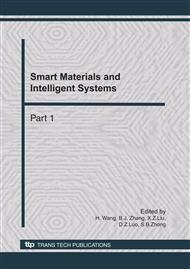p.658
p.663
p.668
p.672
p.677
p.682
p.687
p.693
p.698
Research on Affective Recognition with Physiological Signals Based on IAGA and wkNN Classification
Abstract:
The ability to understand human emotions is desirable for the computer in many applications recently. Recording and recognizing physiological signals of emotion has become an increasingly important field of research in affective computing and human computer interaction. For the problem of feature redundancy of physiological signals-based emotion recognition and low efficiency of traditional feature reduction algorithms on great sample data, this paper proposed an improved adaptive genetic algorithm (IAGA) to solve the problem of emotion feature selection, and then presented a weighted kNN classifier (wkNN) to classify features by making full use of emotion sample information. We demonstrated a case study of emotion recognition application and verified the algorithm's validity by the analysis of experimental simulation data and the comparison of several recognition methods.
Info:
Periodical:
Pages:
677-681
Citation:
Online since:
October 2010
Authors:
Keywords:
Price:
Сopyright:
© 2011 Trans Tech Publications Ltd. All Rights Reserved
Share:
Citation:


